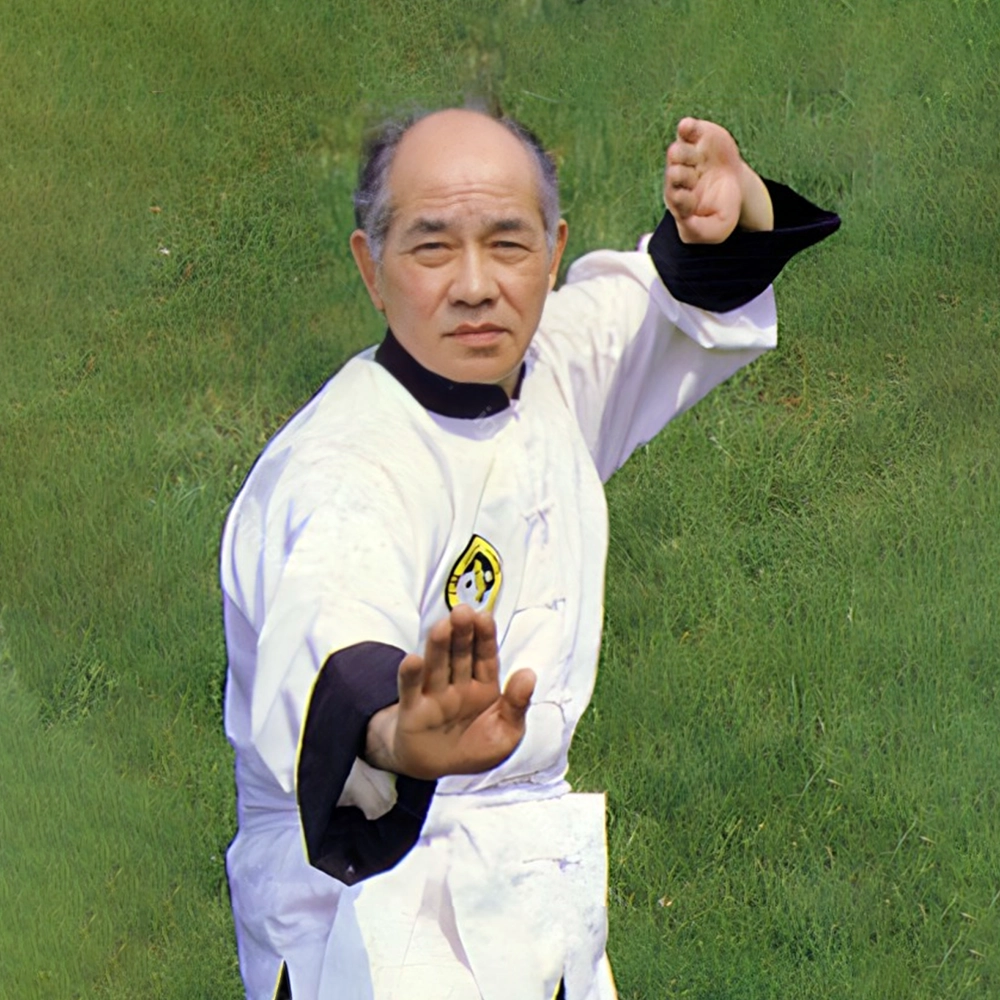
A week of Tai Chi in the vibrant seaside town of Falmouth in Cornwall
Monday 14th & Tuesday 15th 12:30 to 5pm
Wednesday 16th to Friday 18th April 2025 10 am to 4 pm
Golf Club, Above the Bay, Swanpool Rd, Falmouth TR11 5PR
Beginners are welcome

A week of Tai Chi in the vibrant seaside town of Falmouth in Cornwall
Monday 14th & Tuesday 15th 12:30 to 5pm
Wednesday 16th to Friday 18th April 2025 10 am to 4 pm
Golf Club, Above the Bay, Swanpool Rd, Falmouth TR11 5PR
Beginners are welcome

Are you looking to enhance your physical well-being, mental acuity, and overall sense of vitality? If so, you’ve come to the right place. Our daily Tai Chi and Qigong training is your gateway to a healthier and more harmonious life. Whether you’re a beginner or have some experience, our online lessons are designed to cater to your needs and take you on a journey of transformation.
Daily practice has the remarkable ability to infuse your life with energy and balance. It’s not just about a one-time experience; it’s about a gradual, daily transformation that uplifts your well-being. As you join our community of practitioners, you’ll embark on a journey where every day is an opportunity to feel more vibrant and alive.
Tai Chi and Qigong are ancient practices that have been passed down through generations. They offer a holistic approach to well-being by focusing on the body, mind, and spirit. The gentle movements, deep breathing, and meditative aspects of these practices work in harmony to unlock your body’s hidden potential.
We understand that everyone’s needs and schedules are different. That’s why we offer a variety of online lessons to suit your preferences:
If you’re new to Tai Chi and Qigong, our Beginner Level I and II video playlists provide the perfect starting point. You’ll explore the foundational movements and breathing techniques that make these practices so effective.
We provide a range of video options to ensure a seamless and enjoyable learning experience:
Step into an immersive world with our 4K 360° videos. These videos allow you to explore your surroundings from different angles, enhancing your practice.
For those with limited bandwidth, our HD videos offer clear and high-quality content without compromising your internet connection.
We understand that time can be a constraint. Our 30-minute playlists are designed for those with busy schedules, offering quick and effective sessions to give you an energy boost.
For those who prefer more extensive practice sessions, we have 45 and 60-minute options. These longer sessions offer a comprehensive experience and include the following elements:
Begin your practice by preparing your body for the exercises ahead. Our warm-up routines help you loosen up and get ready to flow with energy.
The Daoyin deep breathing exercise is essential for awakening your primary energy center, known as the Dantian, located in the lower abdomen. Feel your energy start to flow and invigorate you.
Kai Men, also known as “opening the door,” is a pivotal step in your practice. It activates the meridians, allowing energy to flow freely throughout your body.
Experience the graceful movements of Tai Chi dance loops. These sequences enhance your balance, focus, and energy flow.
Delve into the meditative aspects of Tai Chi with our form sequences. This is where you’ll find tranquility and inner harmony.
Conclude your practice with the Five Lotus Blossoms exercise, returning your awakened energy to the center for future use.

Stay up-to-date with our latest uploads by subscribing to our YouTube channel. Join our community of practitioners and embark on a journey of self-discovery and inner balance. Subscribing ensures you’ll never miss a session and provides access to a wealth of information and insights.
Much like the Lotus flower opens with the rising of the sun, your daily energy can awaken through our transformative Qigong and Tai Chi program. Your Qi flows most harmoniously when your body is relaxed. That’s why our program begins with a focus on loosening up, allowing your energy to flow freely. Here’s what to expect:
The key to enhancing your Qi is to begin with relaxation. Our practice begins with exercises designed to loosen up your body and create a sense of calm.
The next step is the Daoyin deep breathing exercise. This practice helps awaken your primary energy center, known as the Dantian, located in the lower abdomen. It’s the source of your vital energy.
Kai Men, also known as “opening the door,” plays a crucial role in your practice. It activates the body’s meridians, allowing your energy to flow freely through the channels.
We guide you through the graceful movements of the Tai Chi dance, also known as Tiaowu. This flowing movement form allows you to connect with your energy and balance your body and mind.
As you progress, you’ll delve into the meditative Tai Chi form. It’s a peaceful and introspective segment of our practice that deepens your connection with your inner self.
Our practice concludes with the Five Lotus Blossoms Qi cutoff exercise, returning your awakened energy to the center. It’s here that your energy is stored, ready for use whenever you need it.
Are you ready to unlock your hidden potential and embark on a transformative journey? Our Tai Chi and Qigong exercises hold the key to enhancing your physical flexibility, stamina, mental acuity, and overall well-being. With daily practice, you’ll experience a remarkable transformation:
Imagine a daily routine that not only enhances your physical well-being but also elevates your mental and emotional state. The practice of Tai Chi and Qigong introduces a new vibrancy to your life.
As you embark on this journey, you’ll notice immediate benefits. Your awareness sharpens, and you’ll experience an energizing flow throughout your body. This newfound energy enhances your day-to-day life.
The magic of our Tai Chi and Qigong practice is its ability to provide you with sustained energy. With consistent daily practice, you’ll feel your energy levels grow day by day.
Tai Chi and Qigong empower you with control over your energy. You’ll have it at your disposal when needed and safely stored when it’s not required.
The practices we offer draw from the ancient wisdom of Taoist energy training methods. These methods are designed to help you unlock your true potential and achieve a state of balance and harmony.
The path to a vibrant and energetic life is within your reach. Don’t wait any longer. Begin your journey of transformation with our Tai Chi and Qigong exercises today and take your life to the next level.
Unleash your potential and experience the daily awakening of your Qi with us. Our YouTube playlists are your gateway to a life filled with vitality and harmony.

Tai Chi is a Chinese martial art and internal style exercise that incorporates slow, fluid movements, deep breathing, and meditation.
Tai Chi can enhance balance, flexibility, strength, and cardiovascular health while reducing stress, anxiety, and depression.
Tai Chi is both a martial art and meditation, with some instructors focusing on self-defense and others on health and wellness.
Tai Chi is a low-impact, low-intensity exercise that is gentle on joints and suitable for all genders, ages, and fitness levels. It emphasizes meditation, relaxation, and fluid movements while cultivating Qi or life force, unlike external styles that focus on physical strength and muscle development.
All you need is comfortable clothing and enough space to move around. Practicing barefoot or wearing soft-soled shoes is up to personal preference.
For best results, practice Tai Chi at least two to three times a week. However, even once a week can provide benefits. In China, many practice Tai Chi daily before work.
Warming up before Tai Chi is recommended to prevent injury and improve performance. Light stretching, walking, or gentle exercises along with deep breathing and Qigong can help prepare your body and open energy channels.
Tai Chi can be practiced alone, following choreographed movements, or with a partner, focusing on martial arts techniques and self-defense strategies. A balanced emphasis on both forms and partner exercises is encouraged.
Wear loose, comfortable clothing made of breathable fabrics like cotton. Tai Chi uniforms based on Chinese Mandarin style designs are also an option, suitable for beginners and advanced students alike.
Tai Chi movements stress natural movement, including an upright posture, relaxed shoulders, not overextending steps or locking joints, and avoiding overexertion. Movements are always circular.
Perform Tai Chi movements slowly, smoothly, and with intention, focusing on breathing, body alignment, and energy flow.
Deep, slow, and natural breathing is key, inhaling through the nose and exhaling through the mouth. Breathe in during inward movements and out during outward movements.
Focus on body alignment, keeping weight centered, and moving slowly and smoothly. Coordinate the upper and lower body and avoid leaning.
At Cardiff Tai Chi, we teach the Lee style, as taught by our teacher Chee Soo.
Tai Chi styles include traditional family styles, modern composite styles, and various variants designed by individual teachers. Some styles emphasize order and regimented techniques, while others are more free-style or incorporate both elements.
What characterizes each Tai Chi style?
Choose a Tai Chi style based on your goals, physical abilities, and preferences. Experiment with different styles to find one that resonates.
Yes
Join our Tai Chi club, there’s a well qualified instructor who runs the show. For those living outside Cardiff, visit our Association’s website.
Seek instructors who have completed a formal training program, have teaching experience, and possess knowledge of Tai Chi principles and techniques. It is also important to find an instructor whose teaching style resonates with you.
Tai Chi is a wonderful practice for physical and mental health that can be enjoyed by people of all ages and fitness levels. With proper guidance and consistent practice, you can experience numerous benefits, such as improved balance, flexibility, strength, and mental well-being. When taught correctly, Tai Chi also serves as an ancient and powerful form of self-defense training, increasing your chances of survival if attacked, even from the first lesson.

Tai Chi is a form of exercise that originated in China and has been practiced for centuries. It involves slow, gentle movements that are coordinated with deep breathing and focused attention. Tai Chi is considered a low-impact exercise that can be practiced by people of all ages and fitness levels.
Here are the top ten reasons why you should consider doing Tai Chi:
Tai Chi helps you develop a clear head and focus through its deliberate, purposeful movements. Regular Tai Chi practice can result in better concentration, improved thinking skills, and stronger decision-making abilities. These mental benefits are great for anyone, helping you get ahead in tasks that need attention and critical thinking.
Tai Chi makes you more aware of your body and strengthens the connection between your mind and body, leading to faster reflexes. This improvement can be helpful in loads of situations, from navigating a busy place to taking part in competitive sports or activities that need quick reactions.
Practicing Tai Chi takes commitment and consistency, helping you build discipline and determination. These skills can be applied to loads of aspects of life, contributing to achieving personal goals, academic success, and getting ahead in work.
Tai Chi has been shown to boost your energy levels and improve your mood. The mix of physical movement and mental focus leads to a feeling of being invigorated and well. This positive effect on mood and energy can help you face challenges with more enthusiasm and optimism, boosting your performance in both your personal and professional life.
Tai Chi can complement other sports and physical activities by improving your balance, flexibility, and coordination. These skills can make you better at sports, making you more competitive and skilled in your chosen activities.
The flowing movements and artistic nature of Tai Chi offer a chance for creative expression and personal growth. As you learn to coordinate your body and mind, you can explore new ways of moving and expressing yourself, leading to a deeper understanding of your physical and emotional self.
Tai Chi is often practiced in groups, giving you the chance to connect with others who share similar interests. This social side can help build friendships, a sense of belonging, and a supportive community that contributes to your overall well-being.
Regular Tai Chi practice can lead to better heart health, stronger muscles, and reduced inflammation by promoting the flow of Qi throughout the body. These physical health benefits contribute to a stronger immune system, lower risk of chronic diseases, and better overall fitness. The harmonious flow of Qi also supports your body’s natural healing processes.
Tai Chi is an effective way to manage stress and promote relaxation by cultivating and balancing your Qi. The slow, meditative movements of Tai Chi help to calm the mind and reduce anxiety, improving your overall well-being and resilience to daily stressors.
By practicing Tai Chi, you’ll be learning the art of Qi cultivation and mastery. This skill allows you to tap into your body’s full potential, leading to increased vitality, mental clarity, and an overall sense of well-being. When your Qi is balanced and flowing, you can experience life with more energy and enthusiasm, ready to tackle any challenges that come your way.
In summary, Tai Chi offers a unique blend of physical and mental benefits, with a strong emphasis on the cultivation and balance of Qi. By regularly practicing Tai Chi, you can improve various aspects of your life, from mental focus and athletic prowess to social connections and personal growth. Experience the transformative power of Tai Chi and unlock your full potential by joining our classes today!